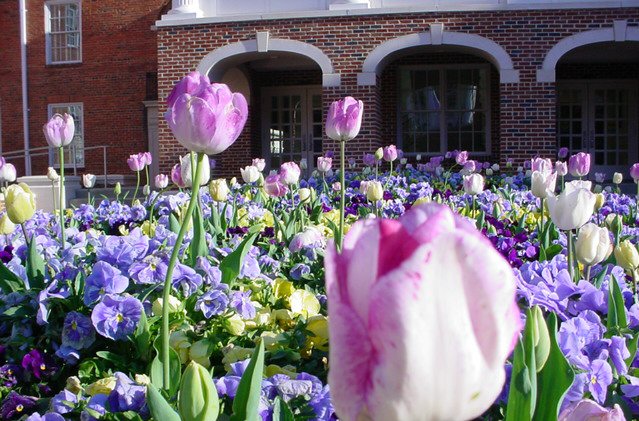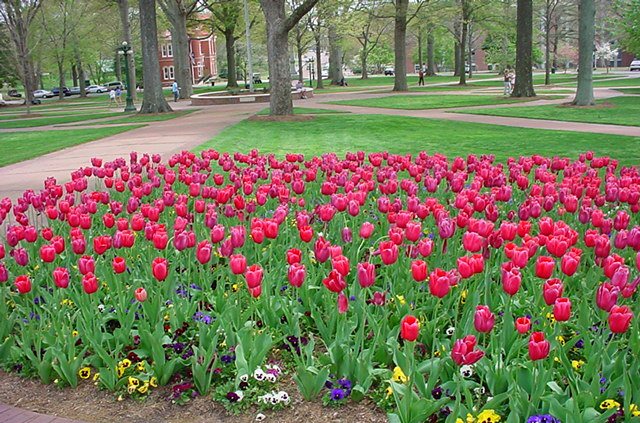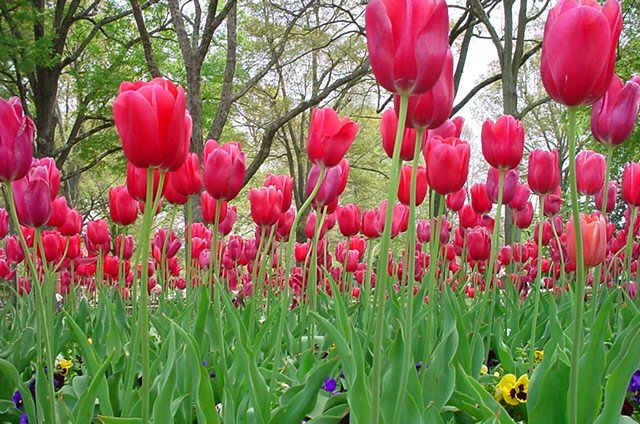Seasonal Color
Seasonal color is used on campus to help add flowering beauty to key
focal points on campus. Landscape Services uses approximately 10,000
season flowers each change out on campus to achieve this goal. We
are often asked about how, when, what to plant in seasonal beds.
Below we have listed what we have found to work for our campus.
Product names and links are not an endorsement, but there for
convenience purpose only.
How To Plant Seasonal Color Beds

How do you plant your flower beds on campus?
The key to any successful plantings is proper planning, excellent bed prep, proper installation technique, high-quality plant material and consistent bed maintenance. Three to four months before beds are to be planted Landscape Services develops a written bed proposal and order. Staff review log data in years past and determine what will be in next years beds. Beds are tilled 6 to 8" deep before each planting. Beds are amended with soil conditioner and tilled again. Beds are measured and plants are space according grow habit of the plant. Plants are removed from the container and roots are gently massaged to ensure their growth outward. Care is given to place in the ground at the proper height. After planting a light coating of slow release fertilizer (Osmocote 14-14-14). A light application of annual mulch that will easily decompose over the next 2 – 4 months is added around the plants to help hold in moisture and help prevent weeds. Using such mulch allows crews to easily till beds up at each change out. We do not put pine straw or heavy wood chips in the seasonal beds. Plants are watered in and kept moist and not allowed to dry out. Beds are visited every 7 to 14 days for dead heading, trimming, weeding and general maintenance.

Do you fertilize your seasonal flower beds?
Yes, we use a slow release complete fertilize. We generally use Osmocote 14-14-14 or equivalent every 45 to 60 days.
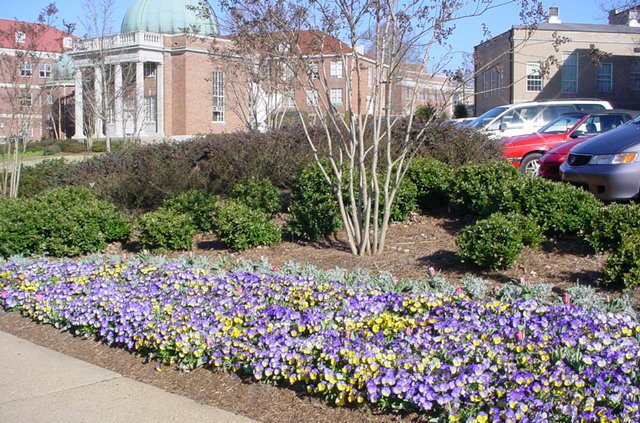
How do you choose what seasonal flowers go where on campus?
The Ole Miss campus has many beautiful focal points. With our limited resources we try to put seasonal color in high traffic/visible areas. Although we would love to put seasonal color around each building limited resources makes this impossible. Each year we log the seasonal color beds and note success and challenges in each area. Each bed has its own micro climate to greatly influence what is planted each spring. Full sun, shade or particle shades, signage height, size of beds, walkways are elements that play a role in the decision process. Late fall and winter seasonal color is limited to due to the cold weather. Usually pansies, kale, dusty miller, flower cabbage, viola (Johnny Jump Ups) are popular choice for seasonal beds. Spring and summer seasonal color have consisted of impatiens, begonias, lantana, penta, salvia, dwarf celosia, Joseph's coat, coleus are some of seasonal color used in the past on campus. http://msucares.com/lawn/garden/flowers/annual/index.html
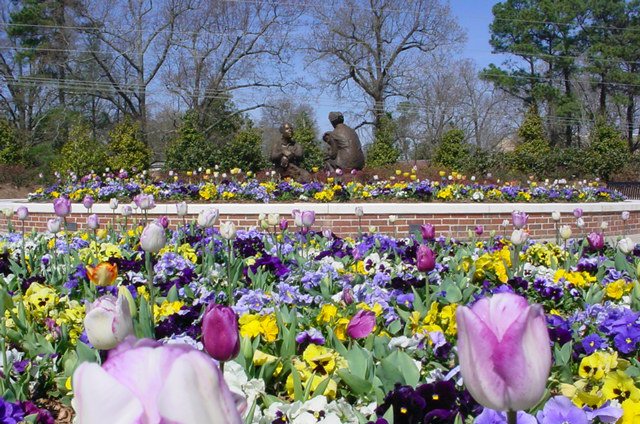
Tell me how you plant your bulbs.
Bulbs are a great reminder that spring is around the corner. Landscape Services plants between 5,000 to 30,000 bulbs each fall. Bulbs are generally planted in seasonal color beds and large beds of mulch around campus. These bulbs are a very inexpensive way to add a special flavor in early months of spring. Generally, bulbs are ordered in the late summer and arrive in the fall pre-chilled and ready to plant. Landscape staff will generally start planting in November. Bulbs are planted 2-3" deep at 8" apart, covered with soil and thin a layer of mulch. No extra fertilizer is added.

